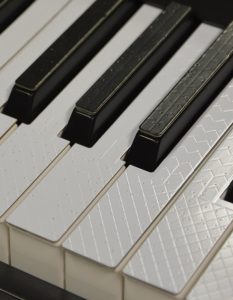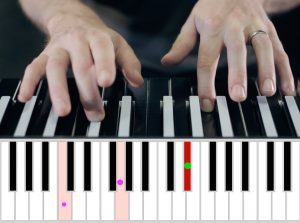The TouchKeys are thin sensor overlays that attach to any standard-sized keyboard. Each key uses capacitive touch sensing — the same technology used in smartphones and trackpads — to precisely measure the location of each finger touching the keyboard. (Read more about the features of TouchKeys.)
Each TouchKeys sensor contains over two dozen conductive pads on the surface, covered by a white or black insulating layer. Each of the pads acts like a small capacitor (a circuit element that stores an electric charge). The pads are laid out so that when the finger touches the key, several pads increase in capacitance. A chip on the bottom of the sensor reads the capacitance of all the pads and arrives at a precise estimate of the contact location, with a precision of better than 0.1mm!


